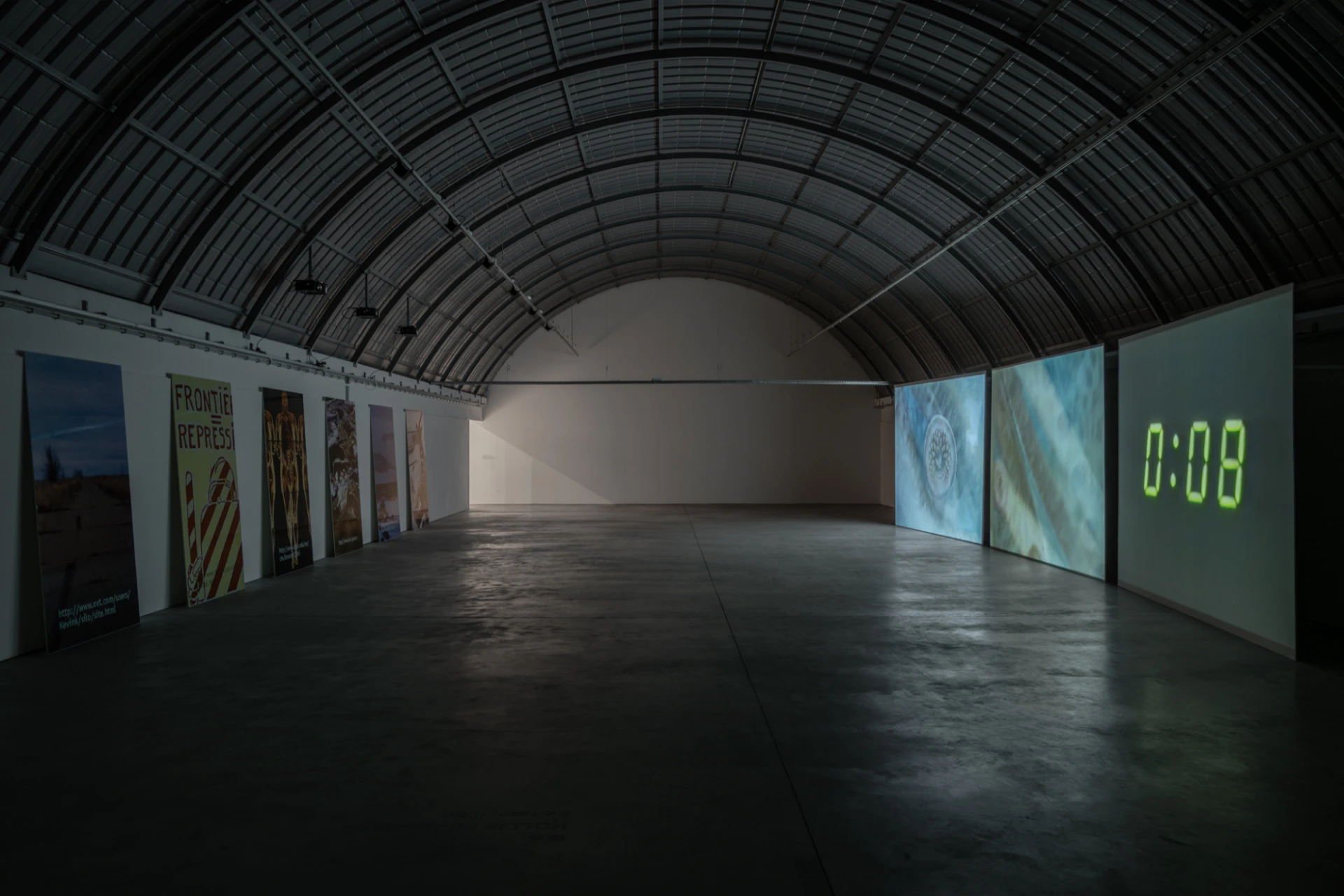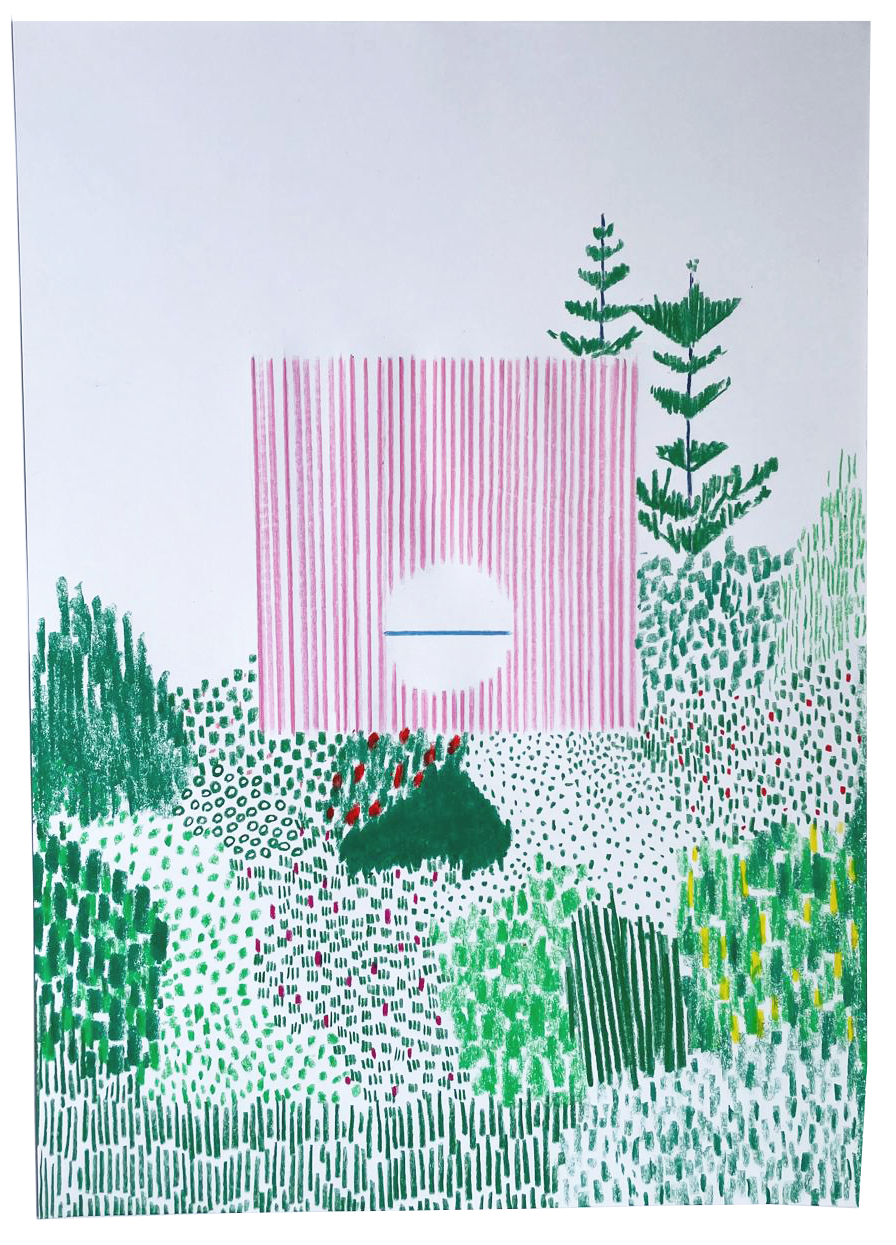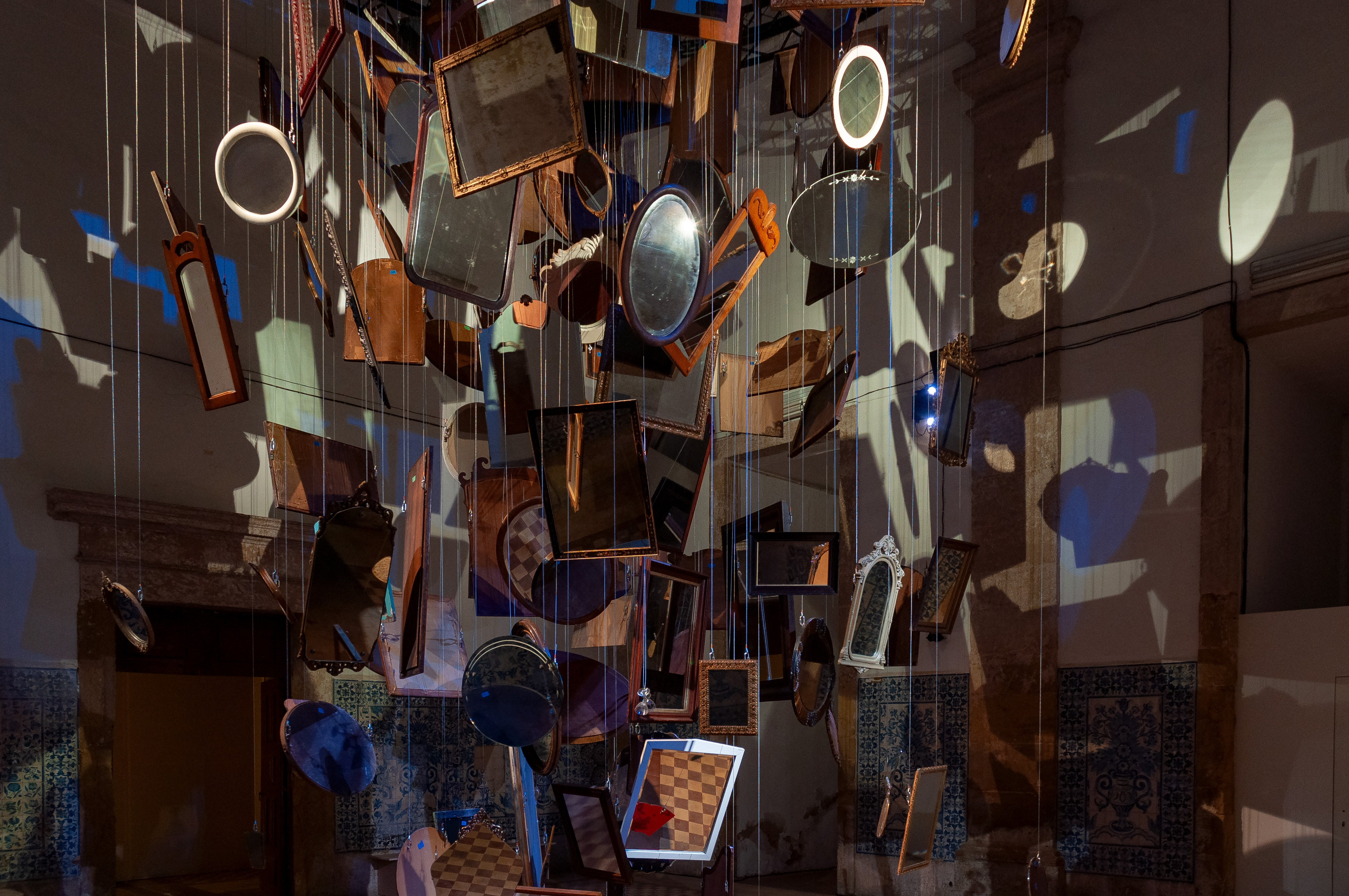Using the natural-organic versus artificial-synthetic relationship as the foundation of her cross-disciplinary artistic research, Inês Norton (1982) has been exploring, by observing and documenting these two seemingly contradictory concepts, the contemporary dialogues emerging from their intersection, dissonance and tension points, adopting them as realms of reflection and research that ramify and reveal themselves in her artistic lingo. Resorting to video, installation, sculpture, photography and a variety of media, Inês Norton’s artistic practice establishes bridges between artificial and emotional intelligence, leading us through the perception of our bodies and the world, in an ongoing dialogue between man, animals, plants and other beings.
Analysing the relationship between humans and nature, and inspired by recent contact with medicinal plants, which have allowed the artist to find other dimensions of her essence and amplified states of consciousness, the exhibition (This) Non Linear Beat at Forum Arte Braga defies cultural perceptions and reality, leading us through altered consciousness and non-linear time. A poetic research into alternative cosmologies founded on animism and biocentrism, (This) Non Linear Beat proclaims the break-up of the individual self and the ability to grasp life in an holistic way, in a vision aligned with indigenous cosmology, according to which knowledge results from making contact with the natural world and ethnogenic plants, the ones possessing the spirit within themselves, from a perspective that sacralises nature.
As a tribute to the natural, the artificial, the spiritual and the cosmos[1], the exhibition also expresses the artist’s commitment to ceramics, a medium often perceived as a female hobby and a lesser genre in the fine arts world, through a body of work that questions artistic hierarchies. Magic, healing and ritual concepts follow us throughout Inês Norton’s exhibition. Inspired by the psychedelic effects of hallucinogenic plants in age-old medicinal practices, spiritual healing rituals and neo-shamanism – an experience of returning to ancient culture and ancestral knowledge – during an artistic residency in Brazil, she launched into the ceramic production practice at João Lourenço’s studio in Barcelos, embodied in the series of unpublished pieces on display. The blurring of vernacular and contemporary traditions in ceramics is visible in works whose organic forms, freedom, chromaticism and multiple branches bring to mind a connection to nature, a connection to the earth and a journey back to craftsmanship and touch. Calling on ancestral techniques, the sculptures – in ceramics[2] and aluminium – testify to the balance between memory, tradition and imagination, a cross between organic and industrial elements, with an emphasis on the way the artist relates to the plasticity and malleability of a fragile material, making works with scale and a physical relationship. Combining figurative and abstract motifs predominantly in purple – which brings an objectual, playful and dynamic edge to the whole -. we see floral elements, hybrid and fantastic creatures, monsters and exoskeletons, a constant dichotomy between exterior and interior. Spread out in perfect balance with the gallery, in an exercise of apparent simplicity, the works scattered across the floor, wall and also hanging from above, plunge us into a poetic exercise by the artist, into an immersive psychedelic setting, into an altered reality where time is diluted, and in which infinite possibilities and convergences between species reign. We see non-human bodies, between primitive and alien beings, which, as fossils, resemble plant tentacles or stems, shells and vertebrae, in a complexity, oddity and organicity of forms whose pigmented surfaces bear witness to the artist’s experimentation with different textures.
We must single out the sculptural representation of Welwitschia Mirablis, a unique plant for its physical features of a woody stem, enormous root and ribbon-like leaves; for its physiology and the fact that it only exists in the north of the Namib Desert and the south of Angola. Similar to an octopus in a desert, the creeping plant, which has been around since the Jurassic period and can reach a longevity of around two thousand years, comes to symbolise the artist’s use of time in this work, while at the same time bringing to mind the beautiful, the sensual and the feminine by suggesting a vulva. An allusion to tactile sensations and the invitation to touch – previously explored by the artist – are shown in a composition between a ceramic piece and animal fur, a work whose textural differences dare us to experience a tactile interaction. Enticed by the presence of sound, a non-linear beat that escorts us throughout the exhibition, we see between lightness and strain the huge circle suspended in the centre of the room, a sign associated with eternity, the divine and time, symbolically reminiscent of the perfection and purity of forms, hinting at a universe between cosmology and cosmogony, reminding us of the never-ending creative cycle.
Within the same area where the sculptural works are shown, we highlight the Digital Chlorophyl video work, which, projected onto two vertical LCD screens, reveals – in a dual game – pictures of aloe vera, a plant with therapeutic properties used in ancient medicinal techniques by several cultures, regarded by the Egyptians as the immortality plant and by the Greeks as a universal panacea. As we observe the artist’s poetic work, we allow ourselves to be carried away by the images’ rhythm and beauty; by the simplicity of the water droplets that linger and run down the green surface of the plant’s thick, fleshy leaves; by the thorns of its serrated edges; and by the lavish drop of its sap[3] which, gel-like, pours out with sensuality as an ode to nature’s vitality.
As the exhibition comes to an end, in a small room neighbouring the previous one, we see Glittered Healing – Tropical formula, a videographic piece developed in collaboration with Paulo Arraiano (1977), projected on the wall and immersed in darkness, with a soundtrack by Arara and Sofia Nunes. Throughout the work, we are guided on a non-linear psychedelic journey through fungal temporal sceneries[4]. Deeply pondering the very essence of human existence, we navigate through an altered state of perception, a dream that, straddling reality and fiction, a female voice narrates to us. Among sparkling, colourful images with a kaleidoscopic effect, we hear the experience of anthropomorphic exoticism, augmented reality and pure synaesthesia.
Foreshadowing the exhibition, as curator Despoina Tzanou put it, a world in which skin becomes fur, metal becomes chlorophyll and pores become hardware, Inês Norton liberates herself and us from regulations, championing integrated thinking with the natural and ancestral world, where fauna and flora combine in the same energetic body, like an immortal organism. Echo performing an ancestral choreography of eternal happy endings. Driven by magic, I sneak through polymorphic ecosystems[5].
(This) Non Linear Beat by Inês Norton will be on show at Forum Arte Braga until March 3, 2024.
[1] TZANOU, Despoina. (This) Non Linear Beat. Exhibition text.
[2] In an interesting contrast, the ceramic works are coated with iridescent industrial car paint.
[3] Living beings’ transmigration from the aquatic to the terrestrial environment entailed the spreading of water throughout the body of pluricellular beings, achieved by means of a liquid (blood in animals; sap in plants), carried by vessels (veins and arteries in animals; phloem and xylem in plants).
[4] TZANOU, Despoina. (This) Non Linear Beat. Exhibition text.
[5] Transcription of a portion of the text contained in the videographic work Glittered Healing – Tropical formula.





